Southeast Asia is home to some of the world’s most breathtaking and lesser-known caves, waiting to be explored. Hidden beneath lush jungles and remote landscapes, these caves offer unique adventures for those willing to venture off the beaten path. From intricate limestone formations to vast underground rivers, each cave holds its own secrets and mysteries. For travelers seeking a blend of natural beauty and adventure, these unexplored caves provide the perfect escape.
Hang Va Cave, Vietnam
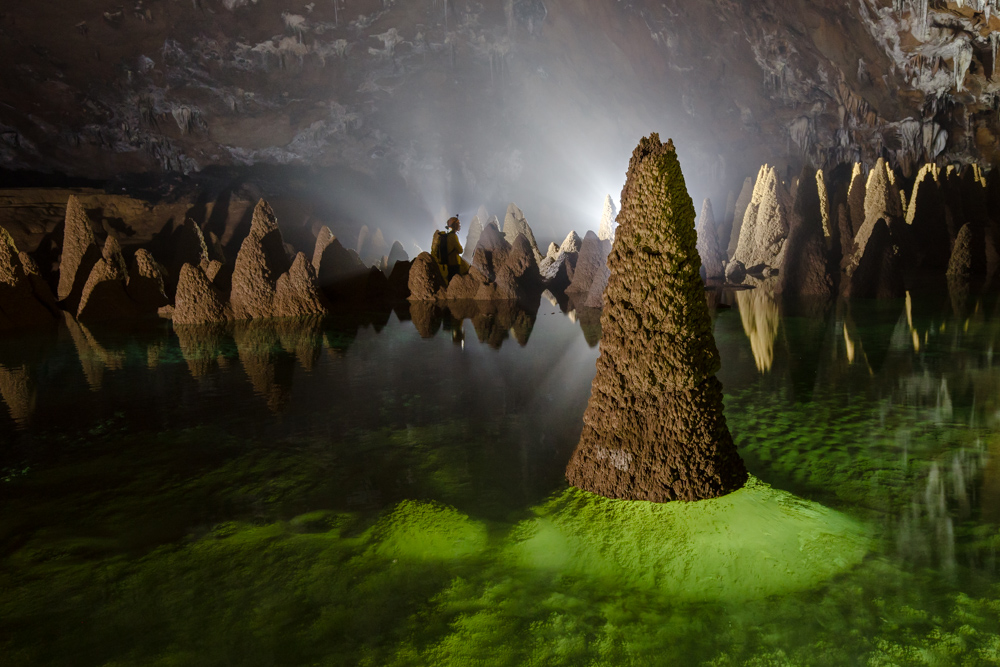
Nestled within the Phong Nha-Ke Bang National Park, Hang Va Cave is a hidden gem that stretches for about 1.7 kilometers. The cave is filled with stunning stalagmites and stalactites, along with emerald-green pools that create a serene atmosphere. Though relatively small, the intricate formations inside make it a captivating experience. Adventurers will also find the cave’s narrow passages and underground rivers exciting to explore.
Gomantong Caves, Malaysia
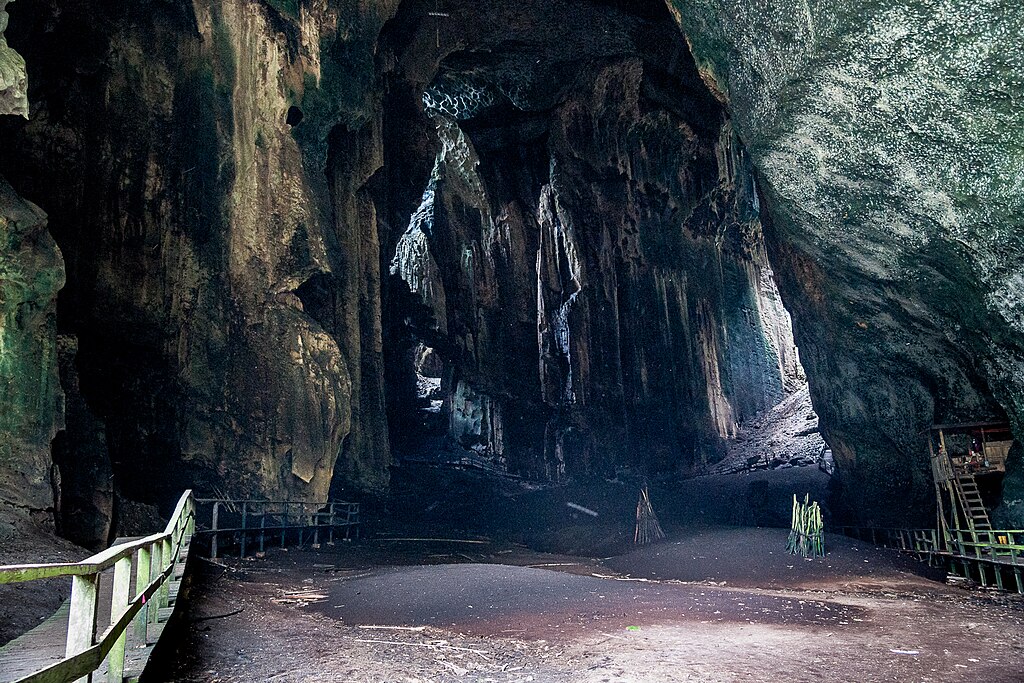
Located in Sabah, Borneo, the Gomantong Caves are a complex system of limestone caves. The cave system is vast, with some chambers reaching up to 90 meters in height. Inside, you can witness a fascinating ecosystem with millions of swiftlets and bats inhabiting the dark spaces. The unique formations of the cave walls and the sheer scale of the chambers are awe-inspiring.
Pindul Cave, Indonesia
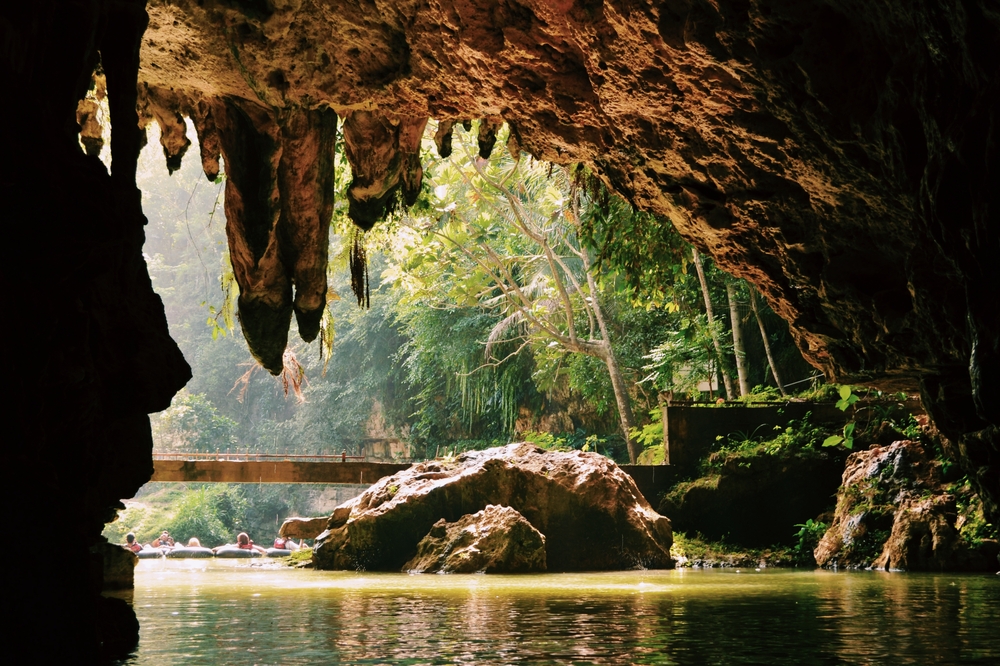
Pindul Cave in Yogyakarta is a lesser-known but enchanting cave. Stretching about 350 meters, it’s relatively small but offers a unique experience of cave tubing through its underground river. Inside, you’ll find beautiful rock formations illuminated by the water’s reflection, creating an almost magical atmosphere. The calm water and the gentle flow make it an ideal spot for a relaxing adventure.
Tham Nam Lod Cave, Thailand

Tham Nam Lod Cave, located in northern Thailand, is an extensive cave system stretching over 1.6 kilometers. The cave features a stunning underground river that you can explore by bamboo raft. Inside, you’ll encounter enormous stalactites and stalagmites, as well as ancient wooden coffins believed to be over 1,400 years old. The eerie atmosphere and the historical artifacts make it a fascinating place to explore.
Khao Luang Cave, Thailand
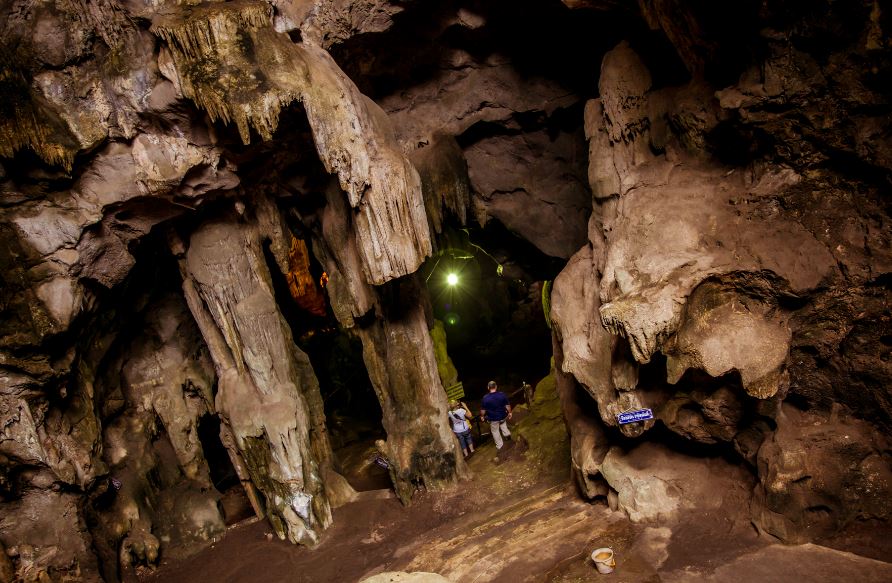
Situated in Phetchaburi Province, Khao Luang Cave is a natural wonder filled with Buddhist statues and shrines. The cave is relatively small, with a main chamber about 65 meters wide, but it’s the spiritual ambiance that makes it special. Sunlight filters through openings in the ceiling, casting a mystical glow on the golden Buddha statues inside. It’s a peaceful retreat with a rich cultural heritage.
Wind Cave, Malaysia
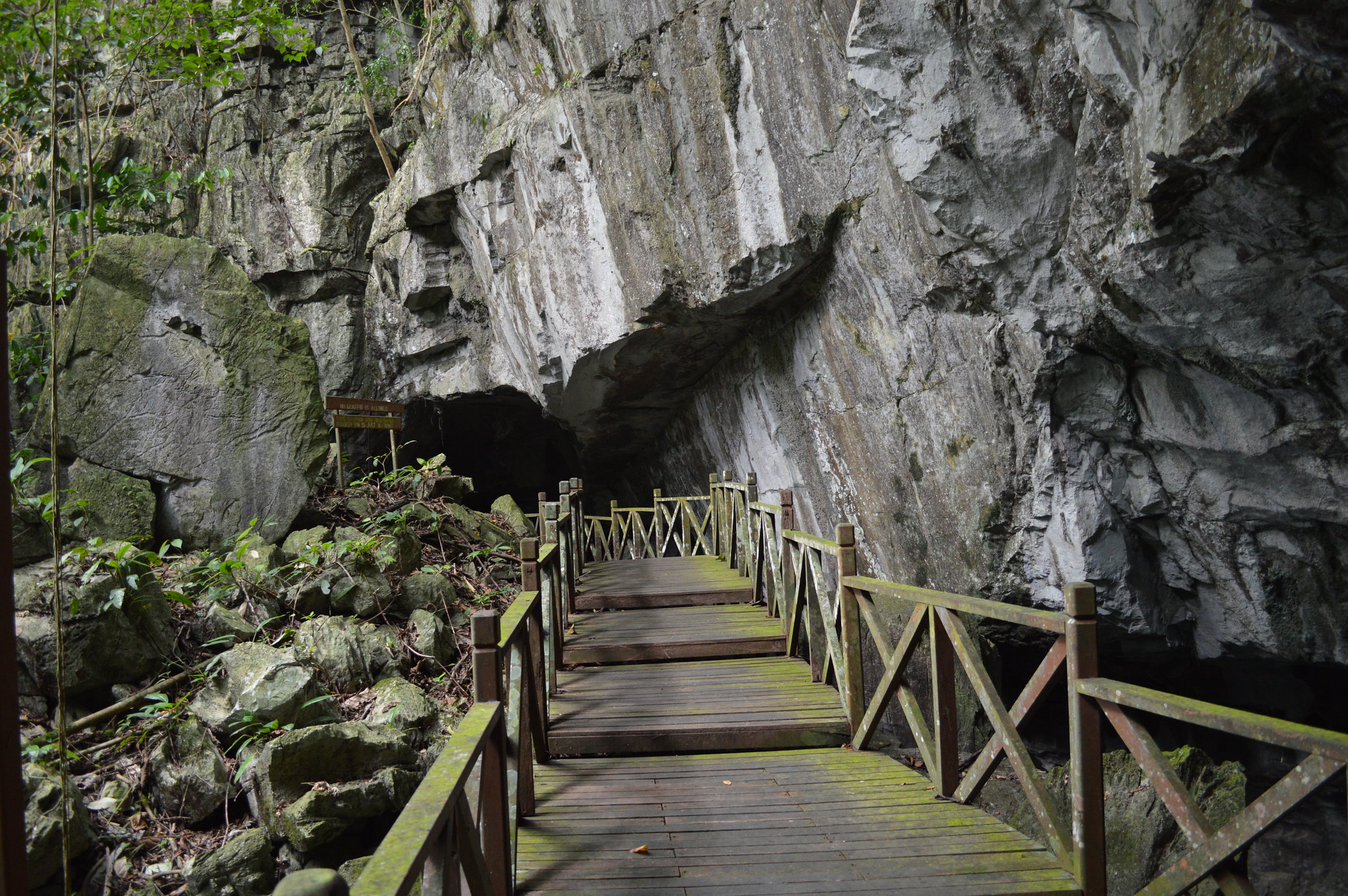
Located in Sarawak, Borneo, Wind Cave is a part of the Wind and Fairy Caves Nature Reserve. The cave system stretches for about 1 kilometer and is known for its impressive limestone formations and strong gusts of wind that flow through the chambers. Inside, you’ll find intricate stalactites, stalagmites, and colonies of bats. The cool breeze and the sound of the wind echoing through the cave create a unique experience.
Phnom Chhnork Cave, Cambodia
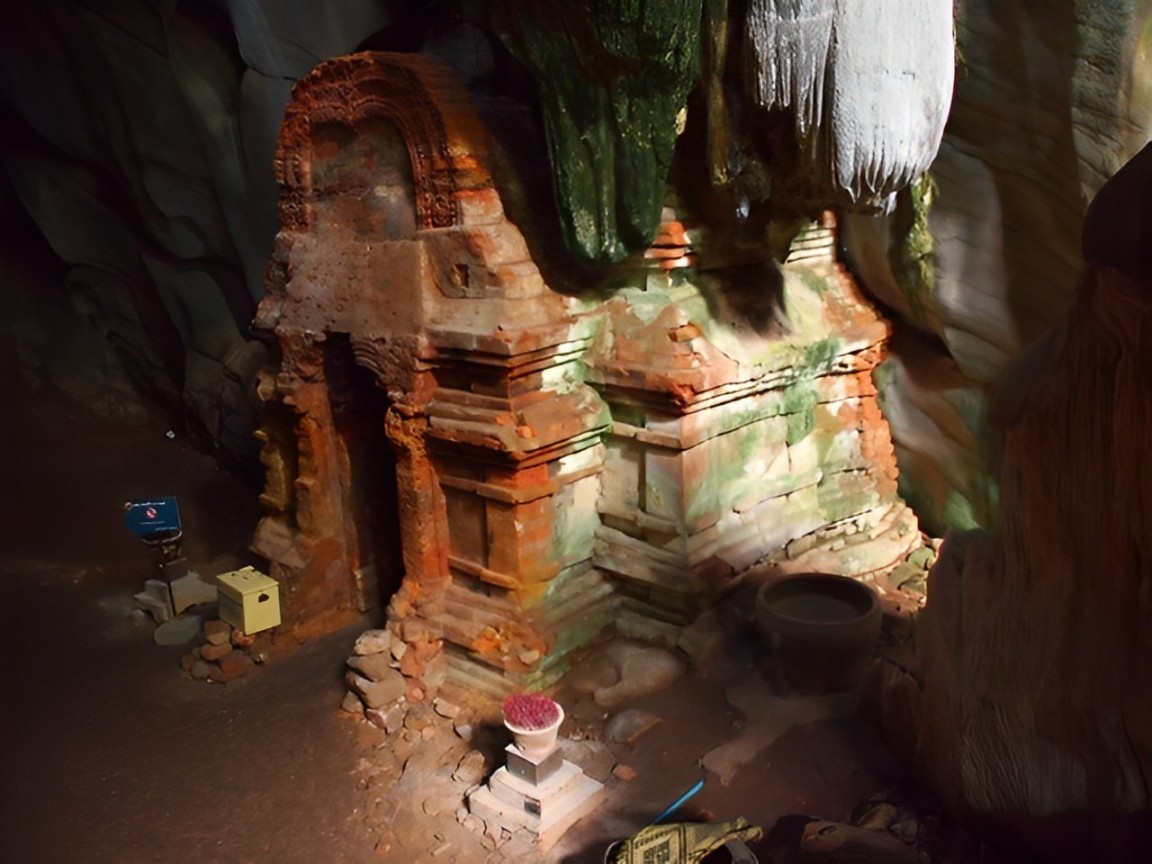
Phnom Chhnork Cave, located in Kampot, is a small but historically significant cave. Inside the cave, you’ll find a 7th-century brick temple dedicated to Shiva, making it a unique blend of natural and cultural heritage. The cave’s limestone formations have gradually encased parts of the temple, creating an intriguing sight. The cave is about 100 meters long, offering a brief but captivating exploration.
Phong Nha Cave, Vietnam
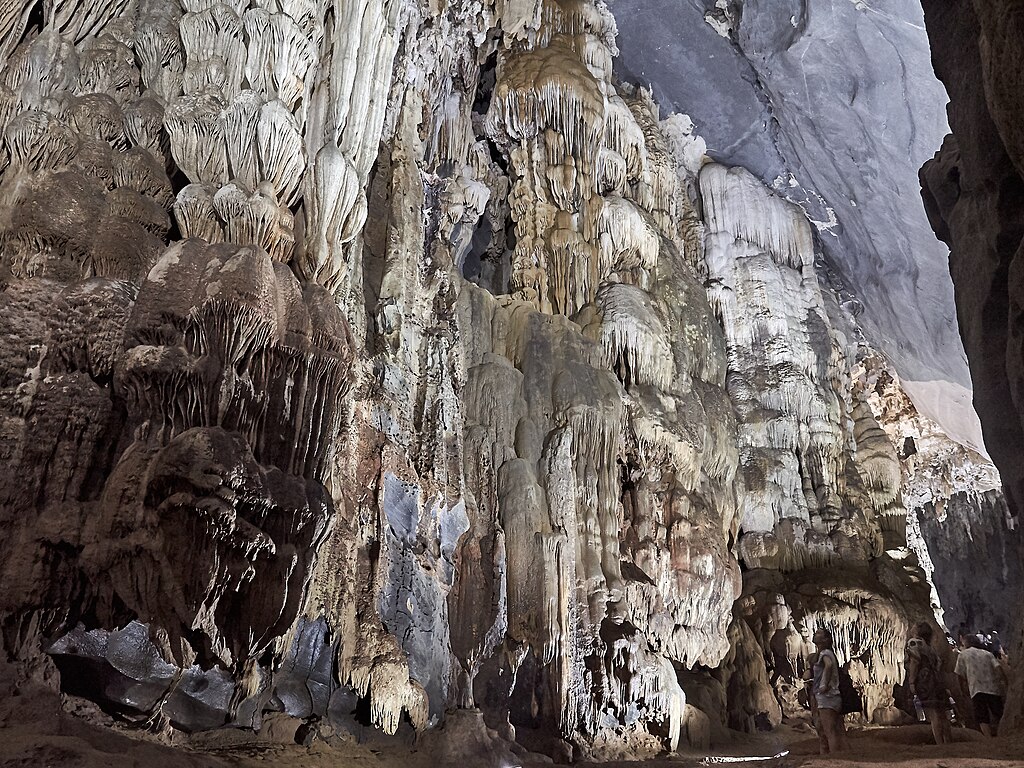
Part of the Phong Nha-Ke Bang National Park, Phong Nha Cave is one of the longest caves in Southeast Asia, stretching over 7.7 kilometers. Inside, you’ll find vast chambers, underground rivers, and impressive rock formations. The cave is famous for its 772 underground passages and the stunning beauty of its stalactites and stalagmites. It’s a true marvel of nature, offering a deep dive into the underground world.
Buddha Cave, Laos
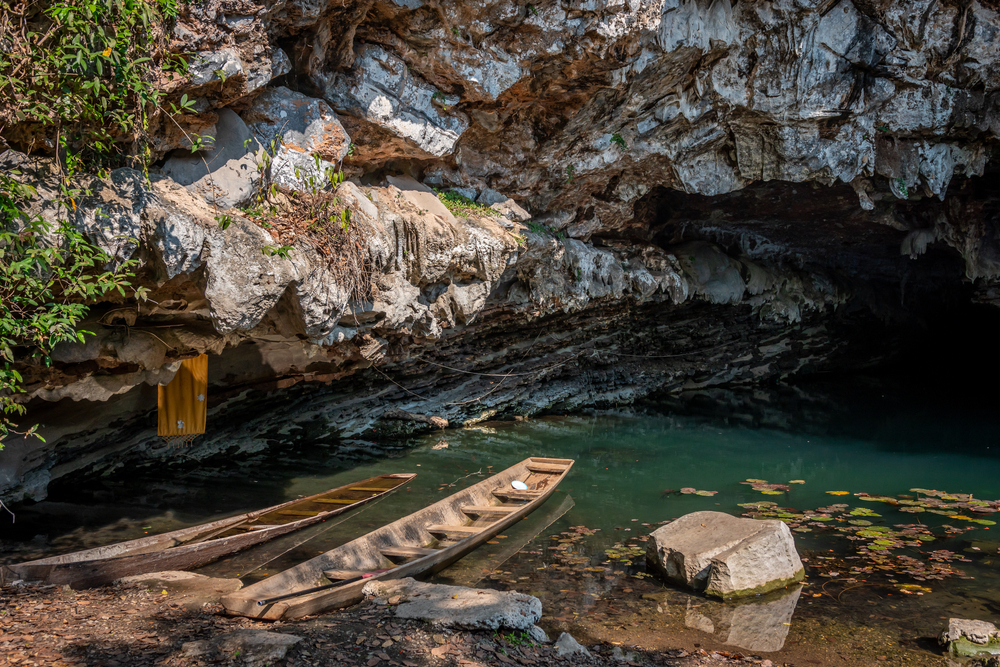
Buddha Cave, also known as Tham Pa Fa, is a sacred cave located in central Laos. It’s a small cave, with a length of about 200 meters, but it houses over 200 bronze Buddha statues, some of which are believed to be over 300 years old. The cave’s serene atmosphere and the spiritual significance make it a unique destination. Visitors often find themselves in awe of the tranquil energy that fills the space.
Deer Cave, Malaysia
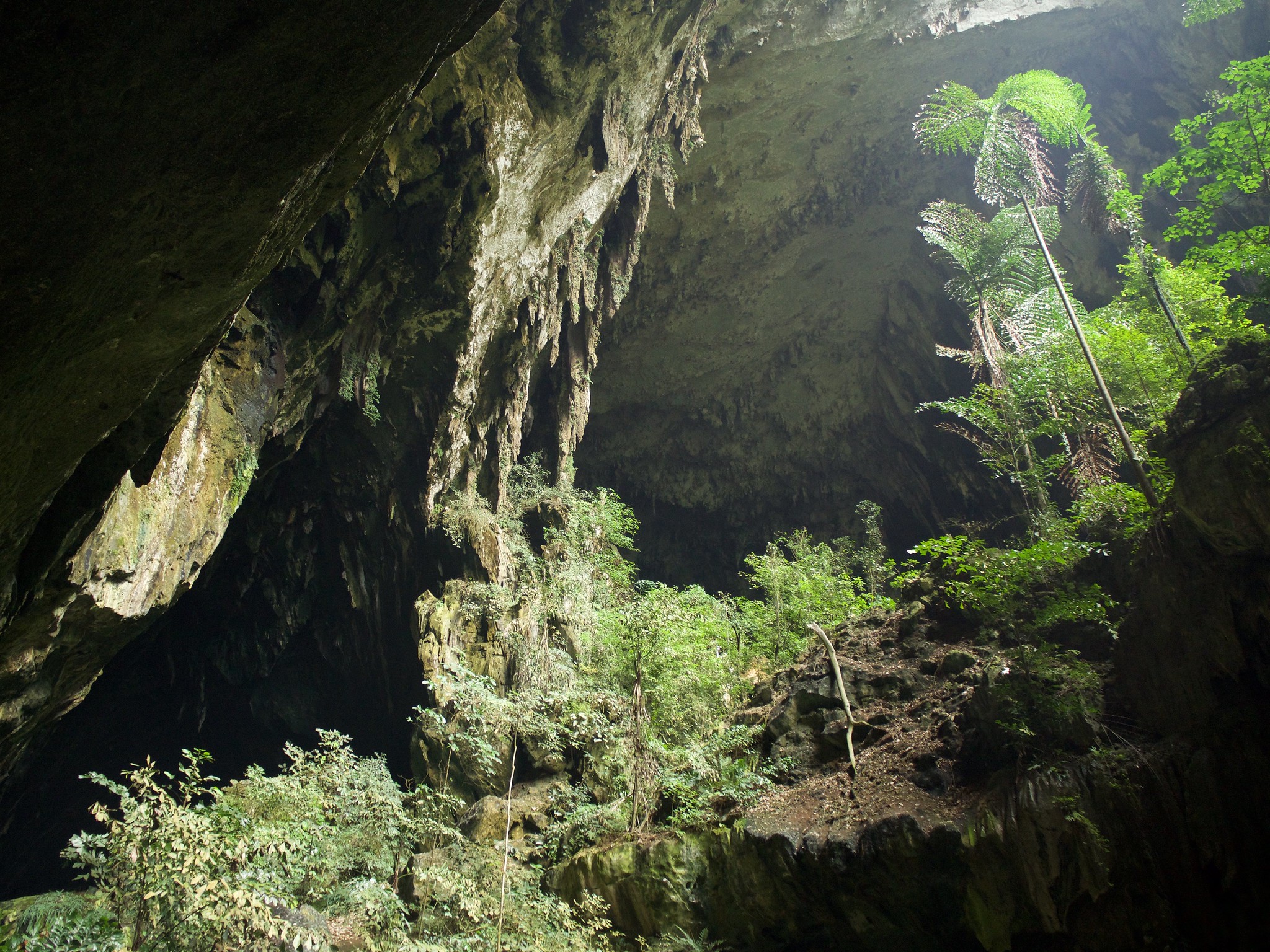
Deer Cave in Mulu National Park, Sarawak, is one of the largest cave passages in the world, with a height of 122 meters and a length of over 2 kilometers. Inside, the cave is home to millions of bats and features the famous “Garden of Eden,” a collapsed section of the cave roof that allows sunlight to create a lush green paradise. The immense scale of the cave and the natural light make it an extraordinary sight.
Goa Jomblang, Indonesia
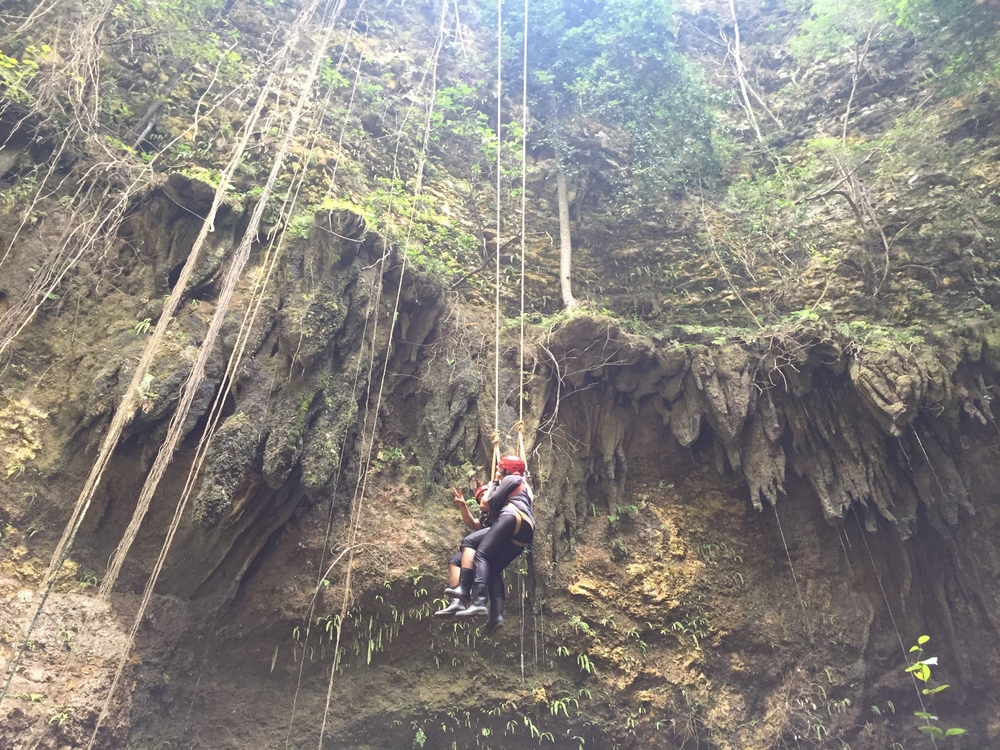
Goa Jomblang in Yogyakarta is known for its vertical cave entrance, which requires a thrilling descent by rope. The cave is about 80 meters deep, leading to an underground chamber filled with lush vegetation and stunning light rays, known as the “Heavenly Light.” The contrast between the dark cave and the brilliant light creates an ethereal experience. It’s a perfect spot for adventurers seeking a unique and challenging exploration.
Xieng Liab Cave, Laos
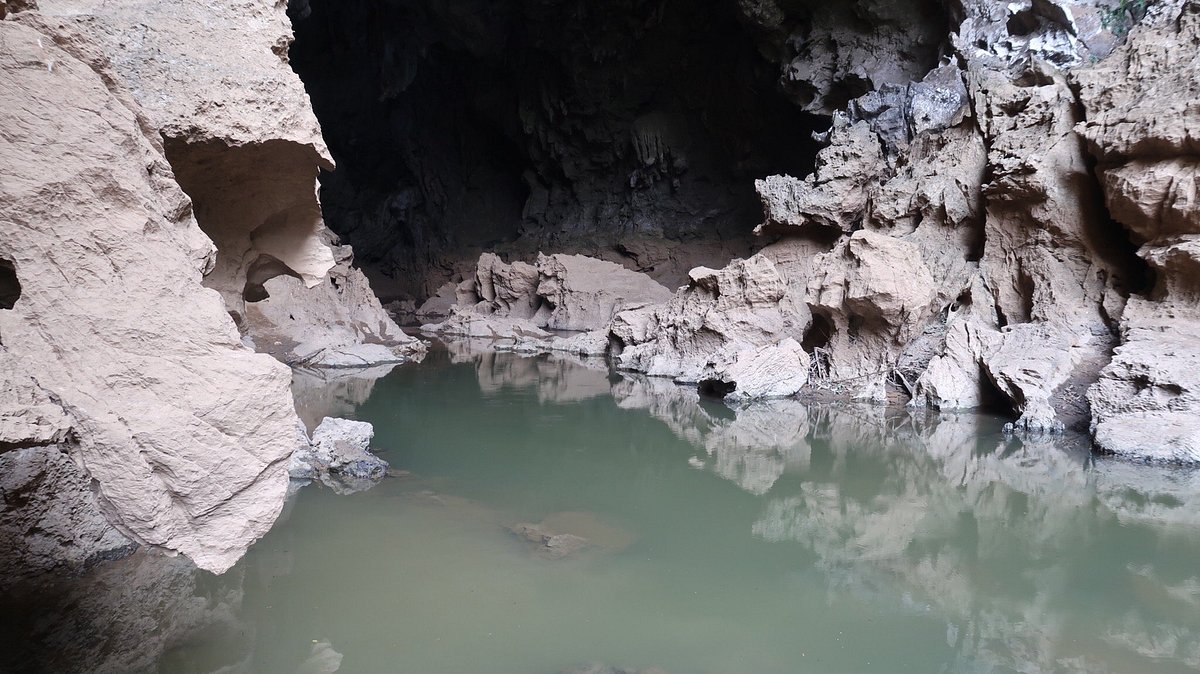
Xieng Liab Cave, located in central Laos, is a serene cave surrounded by lush greenery. The cave’s entrance is wide, and it stretches about 200 meters into the earth. Inside, you’ll find tranquil pools of water and fascinating rock formations. The cave is a peaceful retreat, offering a cool escape from the tropical heat.
Tham Khao Luang, Thailand
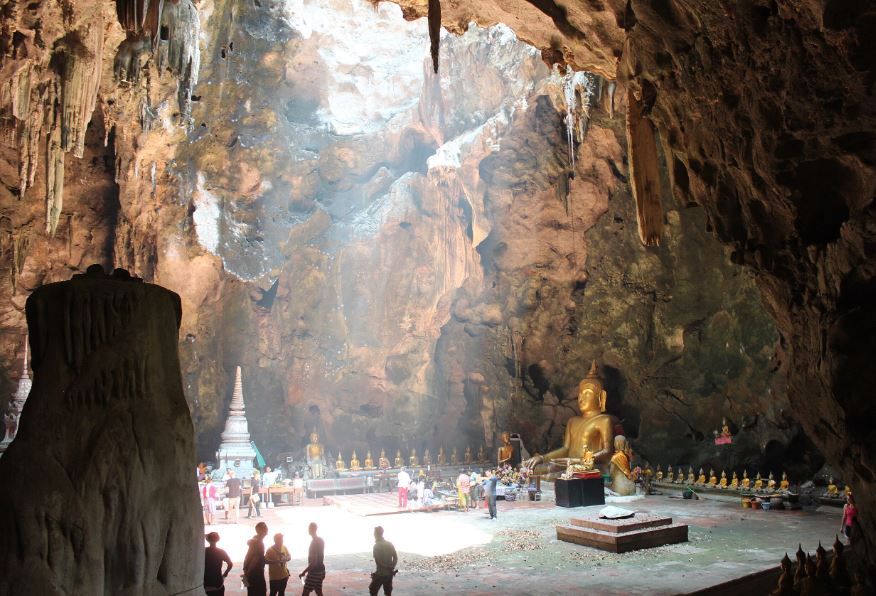
Tham Khao Luang is a cave in Phetchaburi Province, Thailand, known for its stunning natural light. The cave is about 60 meters deep, and its main chamber is filled with Buddha statues, illuminated by sunlight streaming through a large opening in the ceiling. The atmosphere inside is serene and spiritual, making it a popular spot for meditation and reflection.
Sumaging Cave, Philippines
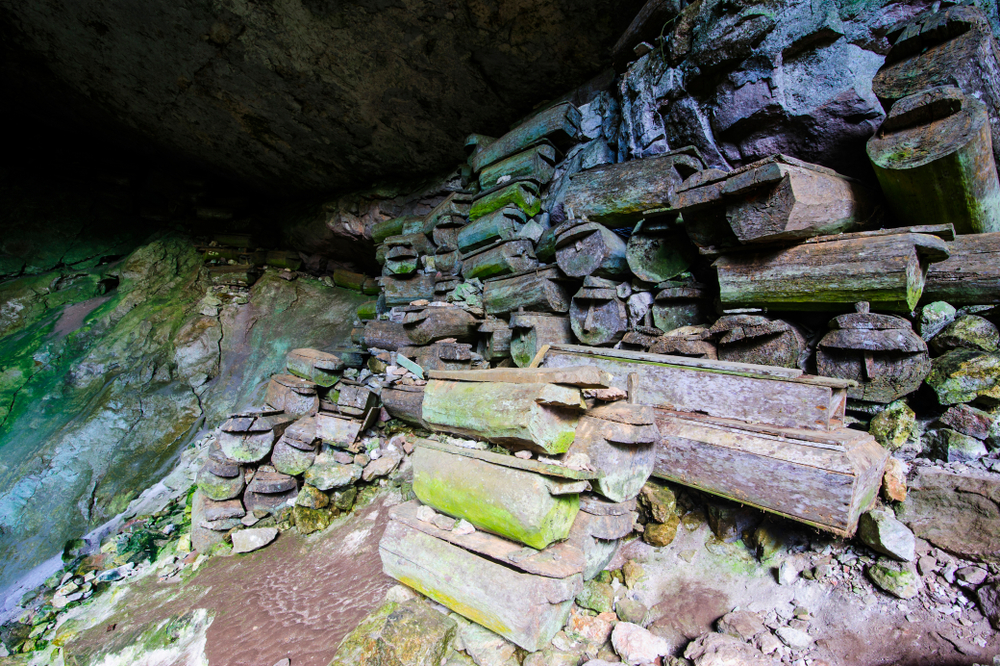
Sumaging Cave, located in Sagada, is the largest cave in the area and is often referred to as the “Big Cave.” The cave stretches for over 1.5 kilometers, with multiple chambers filled with impressive limestone formations and underground streams. Inside, you’ll find natural rock pools, stalactites, and stalagmites that create a fascinating landscape. The cave’s challenging terrain makes it a favorite among adventure seekers.
Pak Ou Caves, Laos
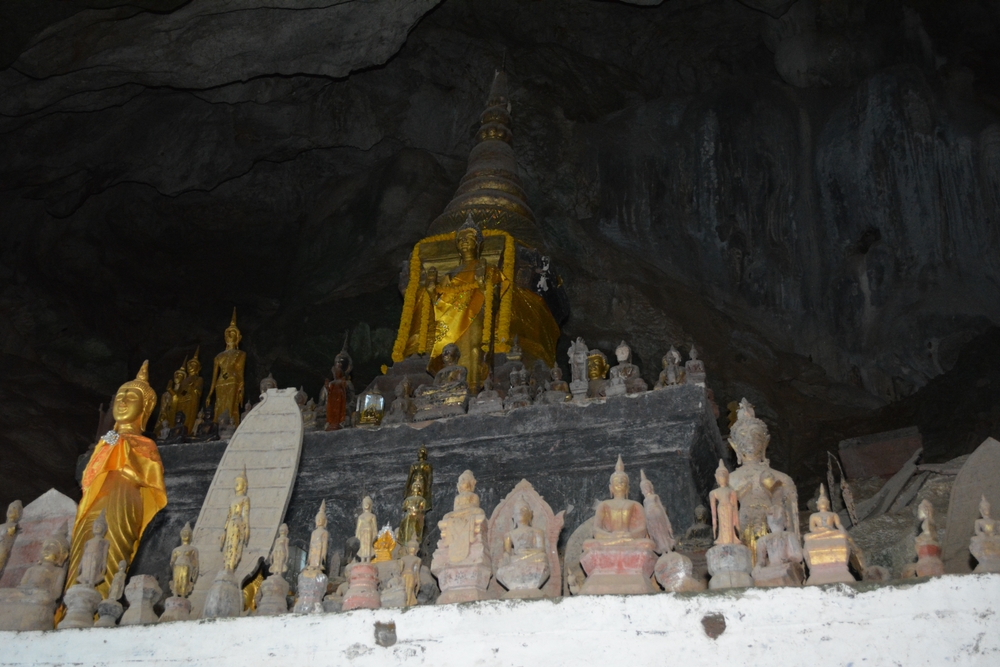
Pak Ou Caves, located along the Mekong River in Laos, are famous for their thousands of Buddha statues. The caves consist of two main chambers, Tham Ting and Tham Theung, which are filled with over 4,000 Buddha images. The caves are relatively small, but their historical and spiritual significance make them a must-visit. The serene atmosphere and the river views add to the overall experience.
Hang En Cave, Vietnam
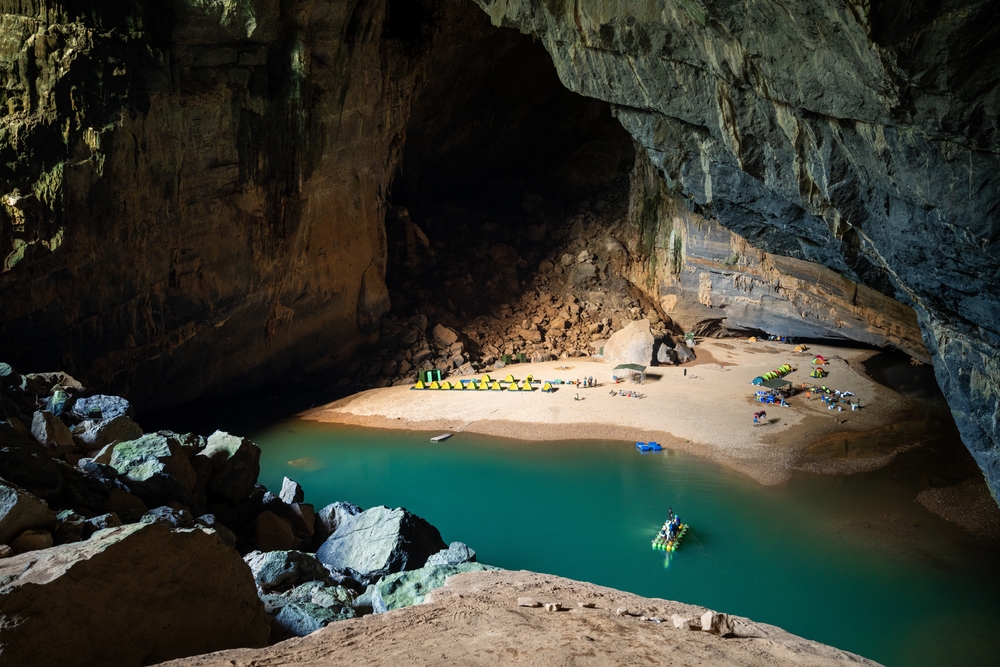
Hang En Cave, located in Phong Nha-Ke Bang National Park, is the third-largest cave in the world, stretching for over 1.6 kilometers. Inside, you’ll find vast chambers with stunning stalactites, an underground river, and even a beach. The cave’s immense size and natural beauty make it a truly breathtaking experience. It’s a popular spot for overnight camping, allowing visitors to fully immerse themselves in the cave’s atmosphere.
Khao Bin Cave, Thailand
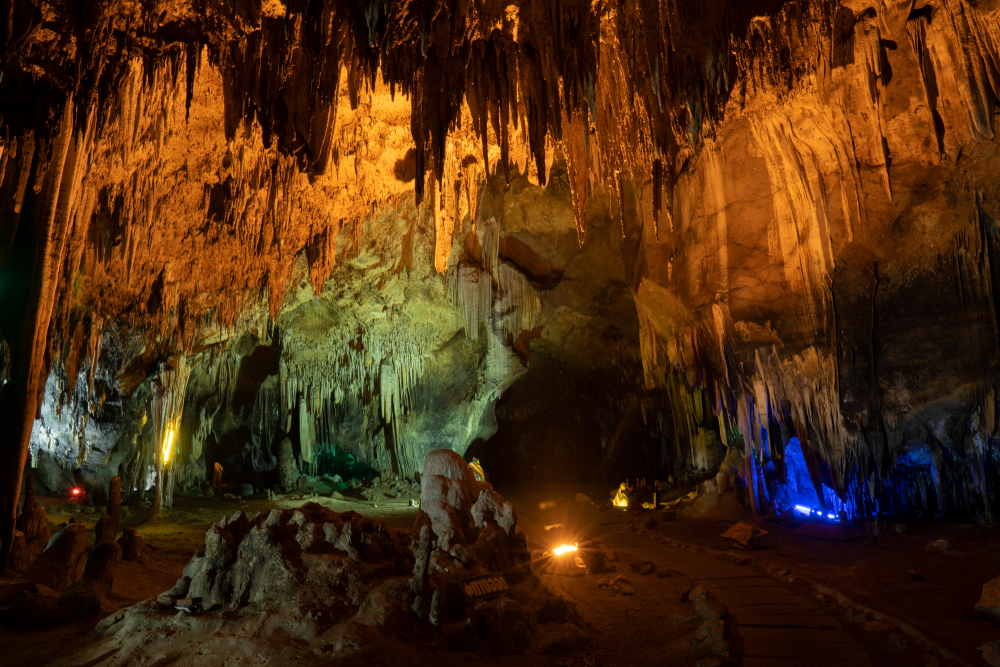
Khao Bin Cave in Ratchaburi Province, Thailand, is known for its unique rock formations. The cave is about 300 meters long, with multiple chambers filled with intricate stalactites and stalagmites. Inside, the formations resemble animals and mythical creatures, creating a fantastical atmosphere. The cave’s cool temperature and eerie ambiance make it a captivating place to explore.
Batu Caves, Malaysia
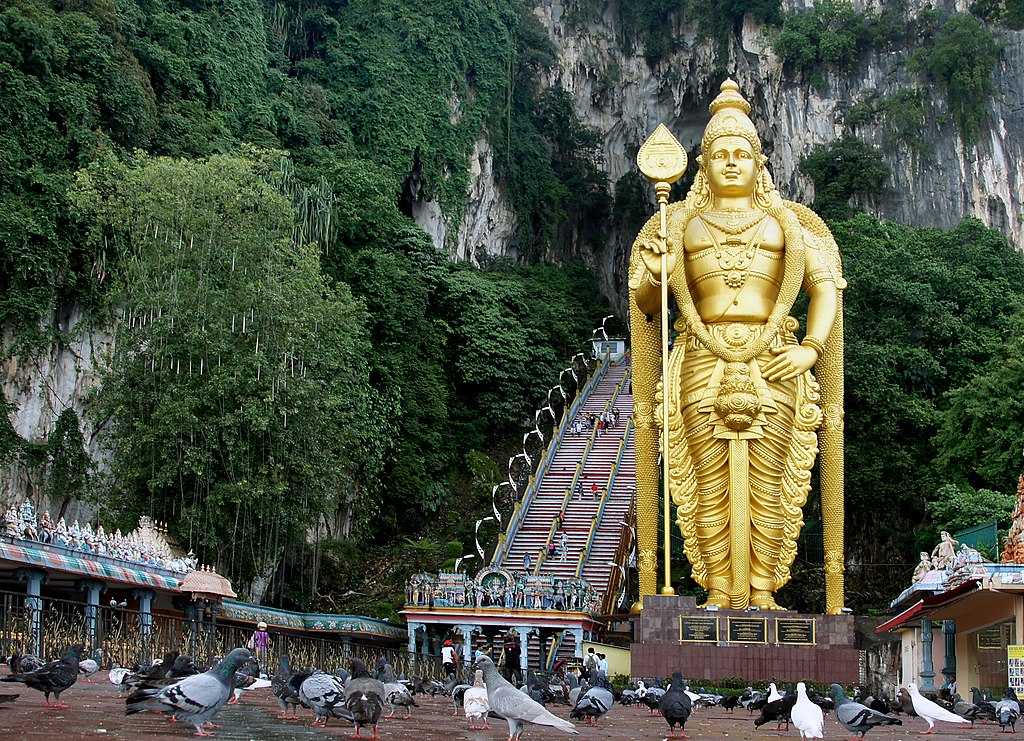
Batu Caves, located near Kuala Lumpur, is a limestone hill with a series of caves and cave temples. The main cave, known as Cathedral Cave, is 100 meters high and houses several Hindu shrines. The cave’s massive size and the spiritual significance make it a major pilgrimage site. The towering statue of Lord Murugan at the entrance adds to the grandeur of the caves.
Tham Lot Cave, Thailand
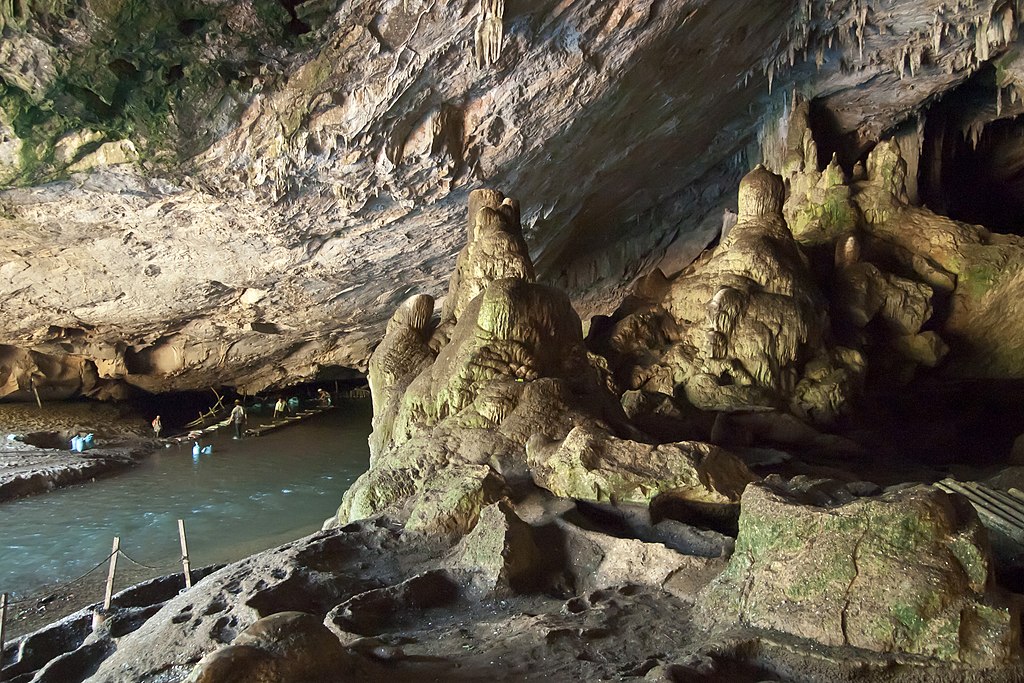
Tham Lot Cave in Mae Hong Son, Thailand, is a large cave system that stretches for over 1.6 kilometers. The cave features an underground river that you can explore by bamboo raft, and its chambers are filled with impressive stalactites and stalagmites. Inside, you’ll also find ancient wooden coffins, believed to be over 1,000 years old. The combination of natural beauty and historical artifacts makes it a fascinating destination.
Phong Nha-Ke Bang Cave, Vietnam
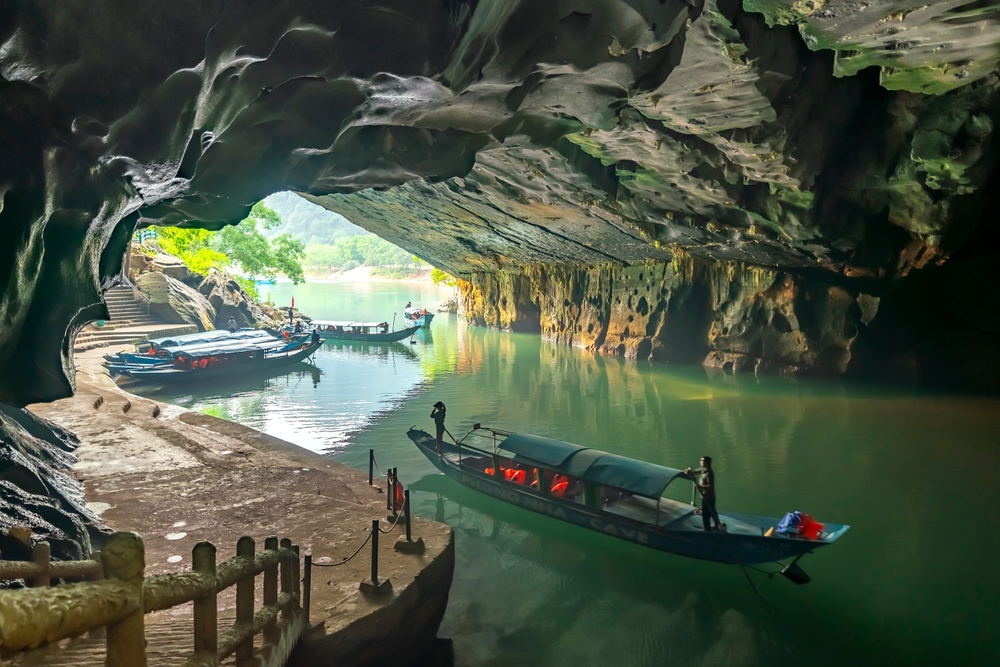
Phong Nha-Ke Bang Cave, located in the Phong Nha-Ke Bang National Park, is part of one of the largest cave systems in the world. The cave stretches for over 7 kilometers, with massive chambers and underground rivers. Inside, you’ll find stunning limestone formations and a diverse array of cave-dwelling creatures. The cave’s immense size and natural beauty make it a must-visit for any adventurer.
This article originally appeared on UnifyCosmos.
More from UnifyCosmos
22 Well-Known Actors Who Started Out in Commercials

Many famous actors started their careers in commercials. These early roles often gave them the exposure they needed to make it big. Read More
20 Secret Additions Found in Popular Snack Foods

Have you ever wondered what’s really in your favorite snacks? Many of them contain secret ingredients that might surprise you. Read More
21 Fascinating Heists That Stunned the World

From art thefts to daring bank robberies, the world has witnessed some truly jaw-dropping heists. These audacious acts of crime often leave authorities baffled and the public captivated. Read More
Leave a Reply